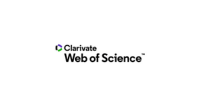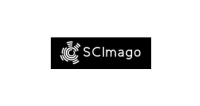SAFETY OF UTERINE LAVAGE WITH OZONATED SALINE IN MARES
DOI:
https://doi.org/10.5380/avs.v1i1.81197Palavras-chave:
endometritis, equine, fertility, ozone.Resumo
This study aimed to assess the safety of uterine lavage using ozonated saline in mares. Each liter of saline (NaCl 0.9%) was ozonated at 50 µg of ozone per mL for 7 min using a medical ozone generator. Then, uterine lavage was performed during estrus or 4h post-breeding and each liter of saline remained inside the uterus for 10 min before being recovered. In experiment 1, two cycles of six mares were used in a crossover design. Lavage was performed with ozonated (Treated) or non-ozonated (Control) saline 4h after the infusion of dead sperm, and cytology samples and biopsies were collected 6 and 24h later. Experiment 2, endometrial biopsies were collected before lavage (T0) and at 15 (T15), 30 (T30), and 60 (T60) days post-treatment with ozonated (n=11) or non-ozonated (n=3) saline. In experiment 3 (n=10), the pregnancy outcome was evaluated subsequent to lavage with ozonated saline 4h after insemination. In Experiment 1, there were no difference at 6h post-breeding in PMNs count on endometrial cytology between treatment and control groups (P>0.05). However, PMNs tended (P=0.09) to be superior in the experimental treatment compared to the control at 24h post-breeding. In addition, the number of PMNs tended to be lower in the control cycle at 6 h (P=0.06) and 24 h (P=0.08) in endometrial biopsies. In Experiment 2, the endometrial architecture, the numbers of lymphocytes and PMN were not affected by the treatment (P>0.05). In Experiment 3, nine out of 10 mares were confirmed to be pregnant after treatment, and there was not pregnancy loss up to 60 days. In conclusion, uterine lavage with ozonante saline solution may cause a mild endometrial inflammation, however, doesn’t harm the endometrium or impact pregnancy outcomes in healthy mares.
Downloads
Publicado
Como Citar
Edição
Seção
Licença
Autores que publicam nesta revista concordam com os seguintes termos:
- Autores mantém os direitos autorais e concedem à revista o direito de primeira publicação, com o trabalho simultaneamente licenciado sob a Creative Commons - Atribuição 4.0 Internacional que permite o compartilhamento do trabalho com reconhecimento da autoria e publicação inicial nesta revista.
- Autores têm autorização para assumir contratos adicionais separadamente, para distribuição não-exclusiva da versão do trabalho publicada nesta revista (ex.: publicar em repositório institucional ou como capítulo de livro), com reconhecimento de autoria e publicação inicial nesta revista.
- Autores têm permissão e são estimulados a publicar e distribuir seu trabalho online (ex.: em repositórios institucionais ou na sua página pessoal) a qualquer ponto antes ou durante o processo editorial, já que isso pode gerar alterações produtivas, bem como aumentar o impacto e a citação do trabalho publicado.













